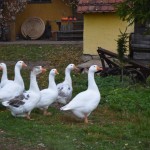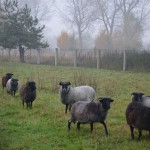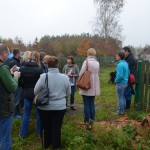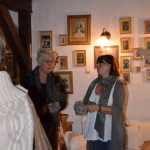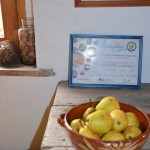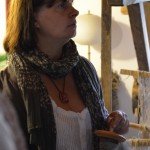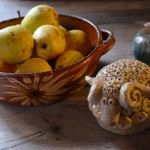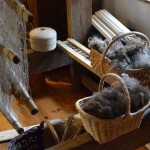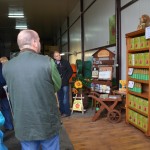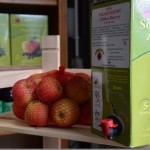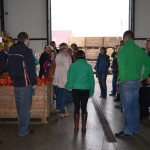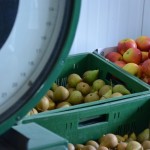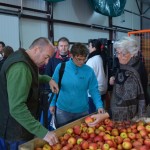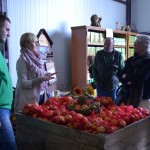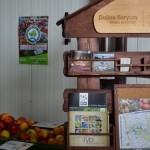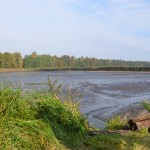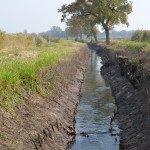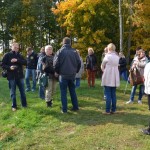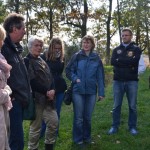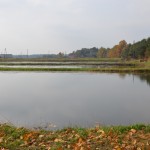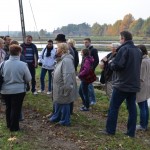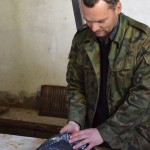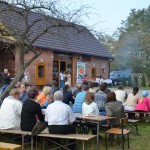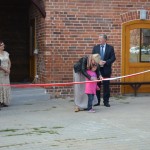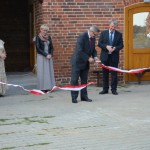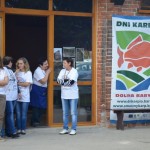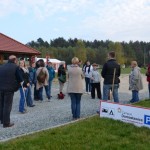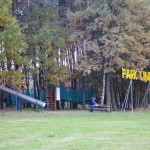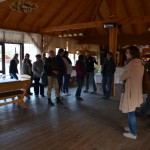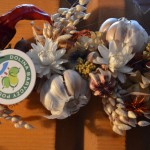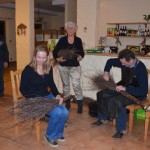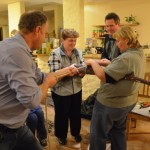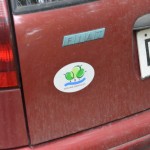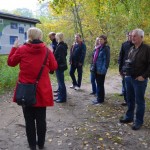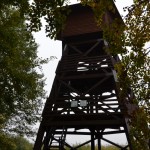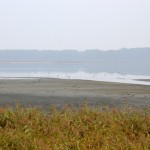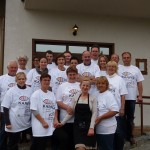The visit to Poland took place from 11th October till 13th October 2013. The visiting delegations consisted of eleven representatives from the Czech Republic, five from the Netherlands and two from Slovakia. The project group of the hosting country consisted of people from the hosting organisation Partnership for The Barycz Valley (Stowarzyszenie “Partnerstwo dla Doliny Baryczy”) and its partners.
Topic of the meeting: How to involve public to reviving rural areas
Programme:
Friday:
- Arrival and accommodation at Zagroda Grabownica
- Presentation of the host organisation by Marta Kaminska
- Welcoming dinner
- Workshop about rural tourism by Kateřina Čadilová
Saturday:
- Visit to regional brand holder: “Rogata Owca” Beata Piekalska in Lędzina
- Visit to regional brand holder: Janusz Dziekan in Wierzchowice
- Visit to regional brand holder Campus Domasławice – sport i rekreacja
- Visit to regional brand holder: Karol Girus
- Visit to opening event of “Fisherman’s house” within the Carp Days 2013
- Movie “Rhythms of nature in the Barycz Valley” by Artur Homan
- Workshop of making birch brooms by Blanka Matoušková
Sunday:
- Birds watching
- Evaluation of the visit
- Departure
Introduction of the visited region
The Barycz Valley is one of the most valuable nature parts of Poland. It consists of a mosaic of ponds, wetlands, forests, fields and meadows. This region is an example of a place where a unique and valuable natural ecosystem has been created largely due to human activity. Currently, much of the area of the Barycz Valley is covered by the Natura 2000 network and there is also situated the largest Polish Landscape Park. The region provides great opportunities for the development of tourism thanks to its close position to Wroclaw and Poznan. There is a strong effort to enhance the tourist image of this region and primarily to support the environment friendly ways of tourism including ecological education and developing of infrastructure for environment friendly tourism (cycling, kayaking, horse riding, bird watching).
The main aims of the local development strategy
- to safe the culture and nature heritage based on traditional and environmental friendly fishery and most famous local product which is carp
- to support development of environmental friendly tourism offer which is created by local producers and service providers
- to involve the inhabitants of the Barycz Valley into active nature conservation
The brand for local products
The purpose of the brand “Barycz Valley recommends” is the support of local producers and the development of the region which is based on the unique nature, traditions, small business and culture. Labelling of products or services guarantees their high quality and positive impact on the environment. The brand is coordinated by Barycz Valley Foundation and Partnership for the Barycz Valley. They support the brand users by education and promotion programs (e.g. organising training courses, workshops and study tours and as well the publishing promotional materials and preparation of common events).
As a good practice example we can mention successfully rediscovering traditions, candidate status of applicants for the brand and obligatory cooperation of brand users among themselves as well as their involvement to promotion activities.
Carp Days 2013
The Carp Days in the Barycz Valley are a series of public events set during September and October. There are a lot of aims for this festival: to promote the nature, to make the tourism season longer, to promote and develop the environmentally friendly tourism offer, to make fish offer in the gastronomy more interesting and regional specific, to support local fish farmers and to make carp more trendy. This festival has been held since 2006 and each year it brings around 30 different events in the region (harvesting of the fish ponds, education events, gastronomy offer, competitions etc.). Participants of the visit had chance to attended one of the festival event – the opening of “Fisherman´s house” – a good example of community activities of local people.
Workshop about rural tourism
Groups of participants had task to think about the region where they are from and to try to answer these four questions:
- What are our priorities when we are coming to a new region as tourists?
- What does our region offer and does it meet the expectations?
- Which negatives does our region suffer?
- What we could change and what we need for it?
Answers according to the countries:
Poland:
1) Flowers, gardens, fields, animals; architecture; people; restaurants, food, cuisine; regional crafts, potteries, ceramics; nature; leisure time inside and outside cities; Where can we buy regional food; quality of tourist information; What is the region famous for.
2) Horse tourism – infrastructure; Unique beauty of nature; Well prepared tourism information; biggest export of carp in Europe, largest ponds area in Europe; restaurants, camps and local food. Bird-watching, bird-watching towers; representatives of crafts; strong representatives of regional brand Barycz Valley recommends and strong cooperation among them – totally helpful; Canoes, roads on rivers.
3) Marketing – weak side; bad conditions of local roads; Missing navigation – signs for local places of regional brand; Websites – no categorization, no information for foreigners what to see, where to sleep, where to eat; Readiness for foreign visitors; Not enough effort to bring people from abroad.
4) Getting money; Put more effort in marketing; Local roads without holes; Less fish bones in carps; More national events organised in this region (to promote it).
The Netherlands:
1) Hospitality – nice welcome; Attractive; Information; If I get and find what they offer; Get to know new experiences; Convincing promotion; Accessibility.
2) Tops bicycle paths; Protestant religion; To be improved; Typical landscape; Historical cities; A lot of places for walking and cycling.
3) No real/strong identity. Not well known; Different sub-regions; No touristic tradition; Lower pride of the local people on their region; Unsatisfactory cooperation among regions; No open shops on Sunday; Absent centre of the region.
4) Be proud and sell it.
Czech Republic:
1) Landscape; Architecture; Job opportunities; Historic sightseeing; Culture; Transport services; Tidiness; Sport; The way of living of local people. What is typical for the region (product, services, nature etc.); Learn as much as possible about my interests; History.
2) Culture; Folklore.
3) Deficiency in accommodation. Bad transport services, roads etc. Unpleasant train stations (often the first what you see from the region); Using money for other things that we really need.
4) Orientation on the problems of normal people. Better financing from the state to the villages; Supporting of people; Larger politic engaging of all people and horse sense. More personal meetings of local action groups; Taxes should stay in the region. Bigger responsibility of state administration; Change of the system.
Slovakia:
1) Local food. Good services; Typical things of the region and what is it unique there; Traditions; People; To get to know different things that we have; Conditions for development of business and civic activities.
2) Agro-tourism; Hiking; Tourism in wintertime; History of the region; Traditional folklore; Offer of services for rural tourism; Offer of local food in pensions, restaurants and farms; Culture; Sports; Regional branding within the region.
3) Transport services; Promoting; Lack of finance; Lack of interest by local people.
4) Financial funds; Destination management; Cooperation; Strengthening of financial help from the state and regional authorities; Supporting of the local economy; Supporting of the local identity. Change of legislation.
Visits to regional brand holders
The participants visited several local producers in order to get to know their motives for they applied for the regional brand, if and how the brand helps to them with promoting of their products and their experiences with running business in protected nature area. The visited places included a farm with eco-friendly bred sheep and kept ecological education, a fruit manufactory, a sports camp and a fish farm. The accommodation facility which was used by the participants has also the right to use the logo of the regional brand. The kitchen of the hotel serves local dishes, among others regional specialities like carp dishes.
Rhythms of nature in the Barycz Valley
Rhythms of nature in the Barycz Valley is an amazing document about the unique nature in the Barycz Valley recorded during two years by Artur Homan. You can see changes of nature in this region during four seasons of a year and admire especially the birds live there.
Workshop of making birch brooms
Blanka Matoušková, one of the Czech participants, brought with her the materials for making natural brooms and she showed how to make them. She is a holder of the regional brand “Prácheňsko regional product”.
Bird watching
The Barycz Valley thanks to its unique nature is one of the most valuable bird areas in Europe. The region is home for a lot of rare species as well as a stop for migrated birds. Bird watching attracts tourist and increases their ecological knowledge at once. It is a great opportunity how to support sustainable tourism in the region.
Evaluation
The visit was evaluated both by contentment questionnaires and by answering the questions what was for the participants the most interesting experience during the visit and what they will bring with them to their country as an example of the good practice.
Here are some of the answers:
- local products (Christmas decoration, carps,
- extraordinary nature
- enthusiastic people (Beata Piekalska, Blanka Matoušková and many others) which are proud on their work and whose life is in harmony with nature
- the concept of the regional brand and of the festival of the Carp days
- cooperation in the region, connection among the holders of the brand, community work
- excellent visit thanks to people who prepared it
- meeting with the other participants of the visit
Report from the visit (PDF)

